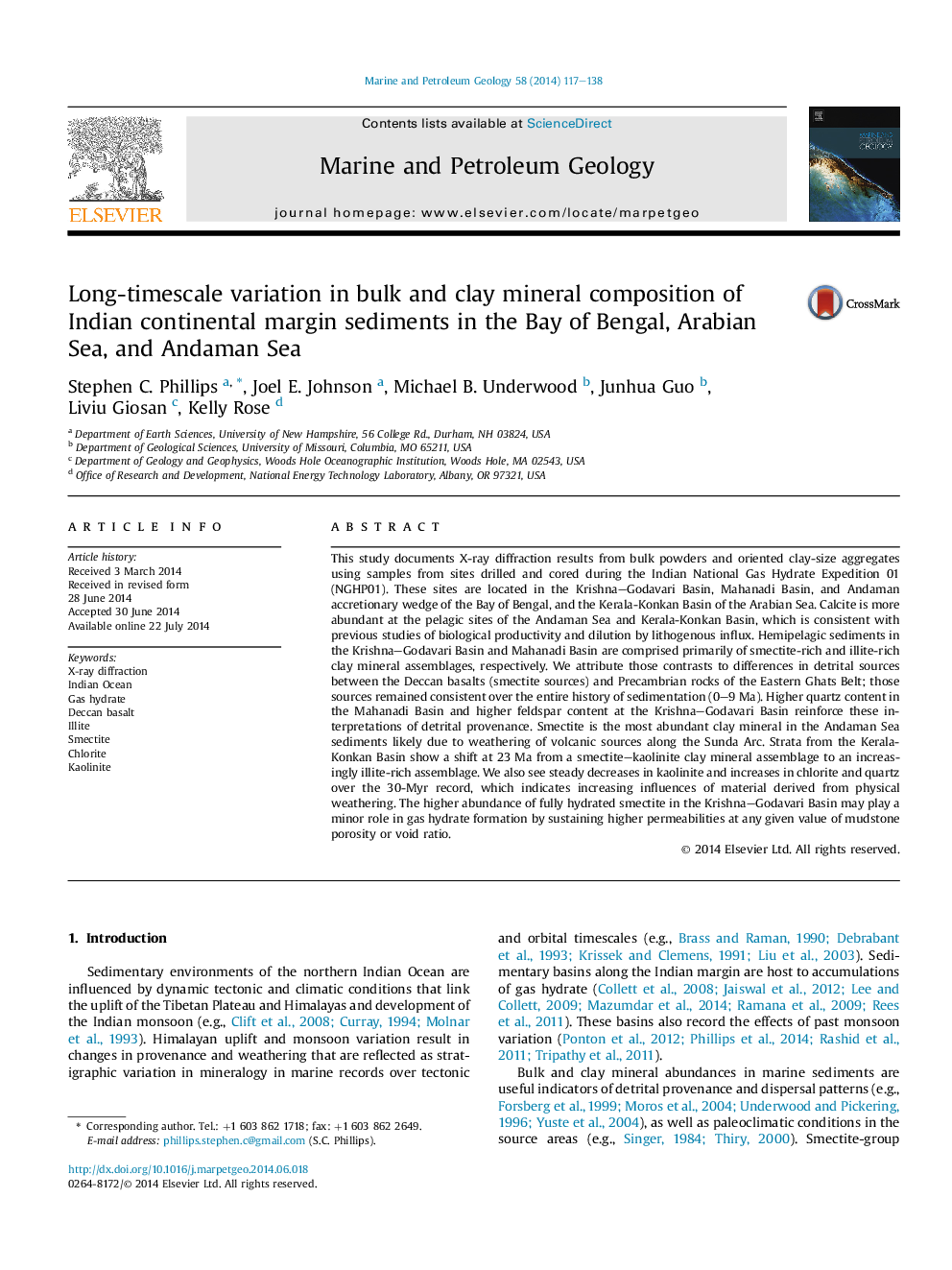| کد مقاله | کد نشریه | سال انتشار | مقاله انگلیسی | نسخه تمام متن |
|---|---|---|---|---|
| 6435212 | 1351619 | 2014 | 22 صفحه PDF | دانلود رایگان |
- High smectite abundance at Krishna-Godavari basin: Deccan basalt source.
- High illite content at the Mahanadi basin: Eastern Ghat and Ganges-Brahmaputra source.
- Calcite abundance in the Andaman Sea reflects paleoproductivity.
- Calcite abundance in the Kerala-Konkan basin reflects dilution by lithogenous flux.
- Transition from kaolinite-smectite to illite at the Kerala-Konkan basin at 23Â Ma.
This study documents X-ray diffraction results from bulk powders and oriented clay-size aggregates using samples from sites drilled and cored during the Indian National Gas Hydrate Expedition 01 (NGHP01). These sites are located in the Krishna-Godavari Basin, Mahanadi Basin, and Andaman accretionary wedge of the Bay of Bengal, and the Kerala-Konkan Basin of the Arabian Sea. Calcite is more abundant at the pelagic sites of the Andaman Sea and Kerala-Konkan Basin, which is consistent with previous studies of biological productivity and dilution by lithogenous influx. Hemipelagic sediments in the Krishna-Godavari Basin and Mahanadi Basin are comprised primarily of smectite-rich and illite-rich clay mineral assemblages, respectively. We attribute those contrasts to differences in detrital sources between the Deccan basalts (smectite sources) and Precambrian rocks of the Eastern Ghats Belt; those sources remained consistent over the entire history of sedimentation (0-9Â Ma). Higher quartz content in the Mahanadi Basin and higher feldspar content at the Krishna-Godavari Basin reinforce these interpretations of detrital provenance. Smectite is the most abundant clay mineral in the Andaman Sea sediments likely due to weathering of volcanic sources along the Sunda Arc. Strata from the Kerala-Konkan Basin show a shift at 23Â Ma from a smectite-kaolinite clay mineral assemblage to an increasingly illite-rich assemblage. We also see steady decreases in kaolinite and increases in chlorite and quartz over the 30-Myr record, which indicates increasing influences of material derived from physical weathering. The higher abundance of fully hydrated smectite in the Krishna-Godavari Basin may play a minor role in gas hydrate formation by sustaining higher permeabilities at any given value of mudstone porosity or void ratio.
Journal: Marine and Petroleum Geology - Volume 58, Part A, December 2014, Pages 117-138
